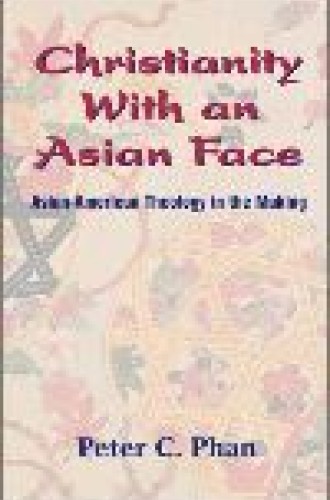Christianity with an Asian Face
Peter Phan adds a Vietnamese voice to the growing diversity of Asian-American theology—a field once dominated by Chinese, Japanese and Korean theologians. Phan, professor of Catholic social thought at Georgetown University, demonstrates that Jesus has an Asian face. His book includes seven of his previously published articles, here organized under the twin themes of liberation theology and inculturation. It explores the kingdom of God, Christ and the Roman Catholic Church from the perspective of cultures conditioned by Buddhism, Taoism and Confucianism.
In constructing his theology Phan is in critical dialogue with such Asian theologians as Chung Hyun Kyung, Jung Young Lee, Aloysius Pieris and C. S. Song. Extensive footnotes further guide the reader.
Phan’s most creative chapter discusses Jesus in relation to the Confucian conceptions of the eldest son and the ancestor. He theologically constructs Jesus as a model of filial piety and as the ancestor par excellence. As firstborn of the children of God (Rom. 8:29), Jesus offers worship to God the Father. Phan compares Jesus’ role with that of the Vietnamese emperor who, as high priest, offers sacrifices to the Son of Heaven in the name of his people. And if Jesus had been a Vietnamese firstborn son, he “would no doubt have taken upon himself with utmost seriousness the responsibilities of ancestor worship,” Phan writes.
Asian immigration to the U.S. provides the context for Phan’s “inter-multicultural theology”—a theology shaped not only by the majority and minority cultures, but also by the “much more complex and challenging encounter of several cultures at the same time . . . the encounter is not between but among cultures.”
From this perspective, Phan’s methodology has three mediations: the socio-analytical, the hermeneutical and the practical (borrowed from Clovodis Boff), which uses stories about the realities of Asian immigrant lives. Phan’s method is a promising beginning for doing Asian-American theology, but he does not tap into the deep reservoir of Asian-American stories. Unlike C. S. Song, he does not show how specific stories shape his theology.
The book’s title is misleading, since most of Phan’s theological journey takes place in Asia rather than in the U.S. Phan does not really deal with issues that Asians encounter in this country. After his opening chapter on Asian immigration, he leaves the U.S., returning to it only in his last chapter, where he “sketches” his Vietnamese American theology. He devotes four chapters to a wide range of Roman Catholic documents, from John Paul II’s encyclical on faith and reason to statements from Asian bishops’ conferences and Vietnamese and Filipino catechisms. Though these documents are historically important and though Phan provides an insightful theological analysis of them, they sidetrack him from constructing his Asian-American theology.
Phan could more profitably have addressed a theological issue especially relevant for Asians in America—the problem of race and how the social construction of race impacts every racial-ethnic minority in this country. The American fixation on color explains why Asian Americans are perceived as foreigners no matter how many generations they have been in America. And racism also explains why they are seen, paradoxically, as honorary whites who are lifted up as “model minorities” to judge and denigrate other minority groups.
This striking omission is particularly puzzling in Phan’s Vietnamese context. He barely mentions the war in Vietnam, despite the fact that the racist dimensions of that war determined how Vietnamese immigrants would be treated in this country. We need a theological analysis of American racism and its impact on all minorities, including Asian Americans. In terms of liberation theology, we need to ask whether it is possible for white Americans to be liberated from prejudging people based on the color of their skin.
Phan’s seeming failure to distinguish between Asian and Asian-American theology is troubling. Asian Americans are neither completely Asian nor completely American but, rather, a blend and overlap of both cultures. Individuals must decide how to integrate this bicultural heritage with their Christianity—how to construct their unique ethnoreligious identity. The theology of this rich hybridity still remains to be written.





